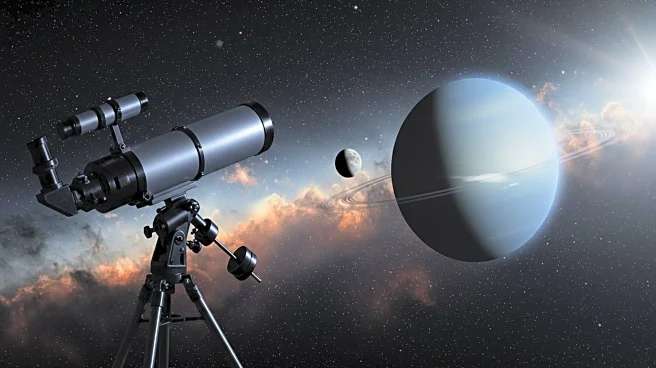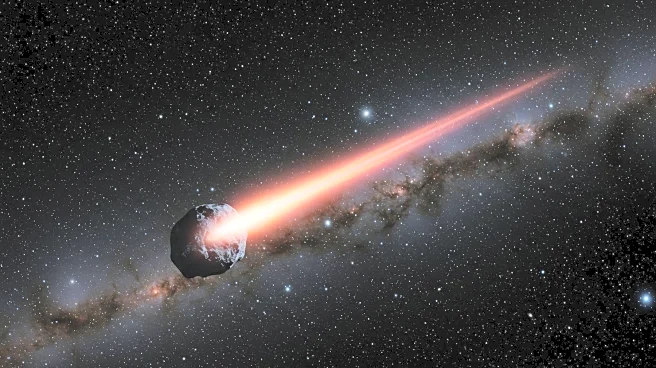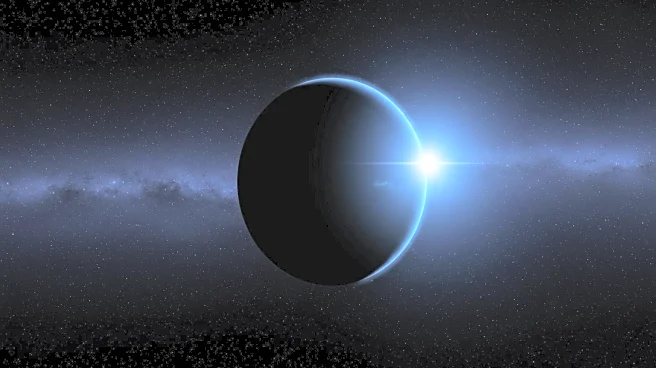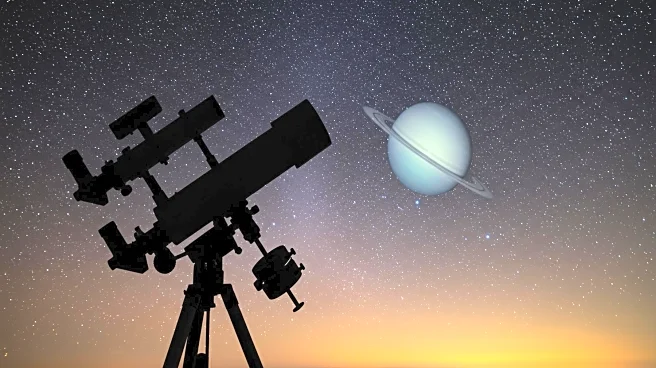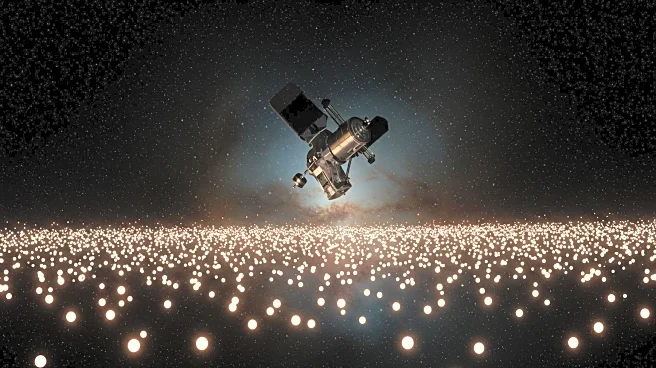What's Happening?
NASA's James Webb Space Telescope has discovered a new moon orbiting Uranus, increasing the planet's known satellite count to 29. The discovery was made by a team led by the Southwest Research Institute during observations on February 2, 2025. The moon, designated S/2025 U1, was identified through a series of long-exposure images captured by the Near-Infrared Camera (NIRCam). This moon is estimated to be six miles in diameter, making it smaller and fainter than previously known inner moons. The discovery highlights the complex inter-relationships between Uranus's rings and its moons, suggesting a chaotic history.
Why It's Important?
The discovery of a new moon around Uranus is significant for understanding the planet's complex satellite system and its history. Uranus has more small inner moons than any other planet, and their interactions with the rings provide insights into the planet's formation and evolution. This finding underscores the capabilities of the James Webb Space Telescope in detecting faint, distant objects, advancing the study of the outer solar system. The discovery also builds upon the legacy of past missions like Voyager 2, which first provided a close-up view of Uranus nearly four decades ago.
What's Next?
The newly discovered moon will require a name approved by the International Astronomical Union. Further observations and studies using the James Webb Space Telescope are expected to continue, potentially revealing more about Uranus's satellite system and its dynamics. The discovery is part of Webb's General Observer program, which allows scientists worldwide to propose investigations using the telescope's advanced instruments. This ongoing research may lead to additional discoveries and a deeper understanding of the outer solar system.
Beyond the Headlines
The discovery of S/2025 U1 highlights the importance of modern astronomical tools in exploring the solar system. The James Webb Space Telescope's infrared sensitivity and high resolution enable the detection of objects previously beyond the reach of earlier observatories. This advancement in technology allows astronomers to explore the intricate details of planetary systems, contributing to the broader understanding of celestial mechanics and the history of the solar system.
